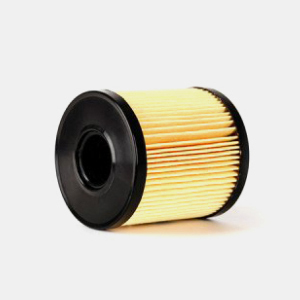-
 Afrikaans
Afrikaans -
 Albanian
Albanian -
 Amharic
Amharic -
 Arabic
Arabic -
 Armenian
Armenian -
 Azerbaijani
Azerbaijani -
 Basque
Basque -
 Belarusian
Belarusian -
 Bengali
Bengali -
 Bosnian
Bosnian -
 Bulgarian
Bulgarian -
 Catalan
Catalan -
 Cebuano
Cebuano -
 China
China -
 Corsican
Corsican -
 Croatian
Croatian -
 Czech
Czech -
 Danish
Danish -
 Dutch
Dutch -
 English
English -
 Esperanto
Esperanto -
 Estonian
Estonian -
 Finnish
Finnish -
 French
French -
 Frisian
Frisian -
 Galician
Galician -
 Georgian
Georgian -
 German
German -
 Greek
Greek -
 Gujarati
Gujarati -
 Haitian Creole
Haitian Creole -
 hausa
hausa -
 hawaiian
hawaiian -
 Hebrew
Hebrew -
 Hindi
Hindi -
 Miao
Miao -
 Hungarian
Hungarian -
 Icelandic
Icelandic -
 igbo
igbo -
 Indonesian
Indonesian -
 irish
irish -
 Italian
Italian -
 Japanese
Japanese -
 Javanese
Javanese -
 Kannada
Kannada -
 kazakh
kazakh -
 Khmer
Khmer -
 Rwandese
Rwandese -
 Korean
Korean -
 Kurdish
Kurdish -
 Kyrgyz
Kyrgyz -
 Lao
Lao -
 Latin
Latin -
 Latvian
Latvian -
 Lithuanian
Lithuanian -
 Luxembourgish
Luxembourgish -
 Macedonian
Macedonian -
 Malgashi
Malgashi -
 Malay
Malay -
 Malayalam
Malayalam -
 Maltese
Maltese -
 Maori
Maori -
 Marathi
Marathi -
 Mongolian
Mongolian -
 Myanmar
Myanmar -
 Nepali
Nepali -
 Norwegian
Norwegian -
 Norwegian
Norwegian -
 Occitan
Occitan -
 Pashto
Pashto -
 Persian
Persian -
 Polish
Polish -
 Portuguese
Portuguese -
 Punjabi
Punjabi -
 Romanian
Romanian -
 Russian
Russian -
 Samoan
Samoan -
 Scottish Gaelic
Scottish Gaelic -
 Serbian
Serbian -
 Sesotho
Sesotho -
 Shona
Shona -
 Sindhi
Sindhi -
 Sinhala
Sinhala -
 Slovak
Slovak -
 Slovenian
Slovenian -
 Somali
Somali -
 Spanish
Spanish -
 Sundanese
Sundanese -
 Swahili
Swahili -
 Swedish
Swedish -
 Tagalog
Tagalog -
 Tajik
Tajik -
 Tamil
Tamil -
 Tatar
Tatar -
 Telugu
Telugu -
 Thai
Thai -
 Turkish
Turkish -
 Turkmen
Turkmen -
 Ukrainian
Ukrainian -
 Urdu
Urdu -
 Uighur
Uighur -
 Uzbek
Uzbek -
 Vietnamese
Vietnamese -
 Welsh
Welsh -
 Bantu
Bantu -
 Yiddish
Yiddish -
 Yoruba
Yoruba -
 Zulu
Zulu
wire mesh automotive
The Role of Wire Mesh in the Automotive Industry
In the dynamic world of automotive manufacturing, innovation plays a pivotal role in enhancing vehicle performance, safety, and efficiency. One significant component that has garnered attention in recent years is wire mesh. Wire mesh, a versatile and multi-functional material, has found various applications in the automotive sector, demonstrating its importance in improving vehicle design and functionality.
Wire mesh is typically made from metal wires woven together to create a grid-like structure. This material is known for its strength, durability, and flexibility. In the automotive industry, its applications range from structural components to filters and screens, underscoring its versatility as an engineering material.
The Role of Wire Mesh in the Automotive Industry
Moreover, wire mesh serves a critical function in the realm of safety. In the automotive body structure, wire mesh is often used in composite panels and reinforcements, where it adds strength without significantly increasing weight. This is essential in modern vehicle design, where manufacturers strive to create lighter vehicles to improve fuel efficiency. The incorporation of wire mesh helps achieve this goal by providing structural integrity, particularly in areas prone to impact, enhancing passenger safety.
wire mesh automotive

In addition to structural and filtration roles, wire mesh is also commonly found in sound-dampening applications. Automotive interiors are increasingly focused on providing a quiet and comfortable environment for passengers. Wire mesh materials are utilized in combination with acoustic dampeners to minimize noise vibrations within the cabin, resulting in a more enjoyable driving experience. This synergy between wire mesh and sound-dampening technology highlights the innovative approach automotive engineers take to enhance passenger comfort.
Furthermore, wire mesh is utilized in various aesthetic applications within vehicles. From grilles to protective screens, wire mesh can be engineered to offer both functional benefits and visual appeal. Manufacturers often use decorative wire mesh in vehicle designs to create unique and stylish appearances without compromising on performance. This dual function speaks to the versatility of wire mesh and its alignment with the automotive industry's drive for both form and function.
The increasing focus on sustainability in the automotive sector has also prompted manufacturers to explore eco-friendly materials. Wire mesh is often manufactured from recyclable metals, making it an environmentally conscious choice. Utilizing materials that can be recycled at the end of their lifecycle aligns with the automotive industry's shift towards sustainable practices.
In conclusion, wire mesh is a vital component in the evolution of automotive engineering. Its diverse applications in filtration, safety, sound reduction, aesthetics, and sustainability underline its significance in modern vehicle design. As the automotive industry continues to innovate and adapt to changing consumer demands and environmental concerns, wire mesh will undoubtedly remain a crucial material, driving advancements in automotive performance and efficiency.
-
Shipping Plastic Bags for Every NeedNewsJul.24,2025
-
Safety Netting: Your Shield in ConstructionNewsJul.24,2025
-
Plastic Mesh Netting for Everyday UseNewsJul.24,2025
-
Nylon Netting for Every UseNewsJul.24,2025
-
Mesh Breeder Box for Fish TanksNewsJul.24,2025
-
Expanded Steel Mesh Offers Durable VersatilityNewsJul.24,2025











